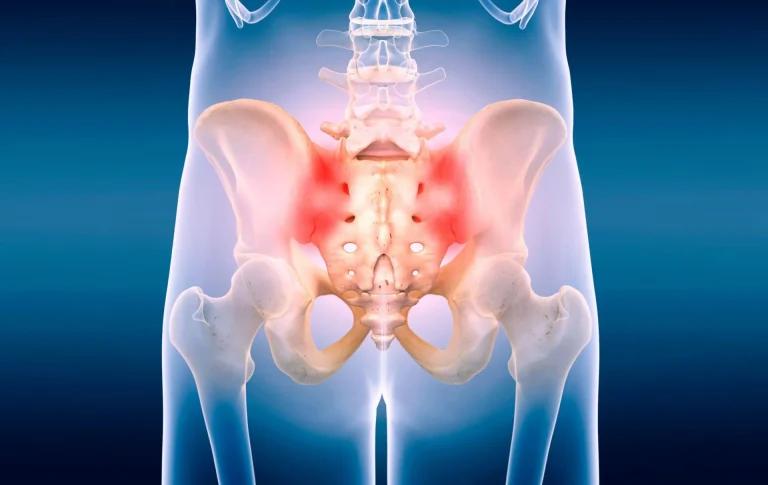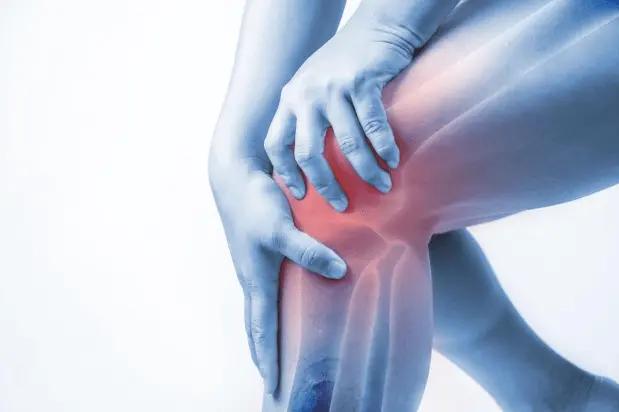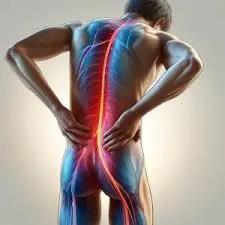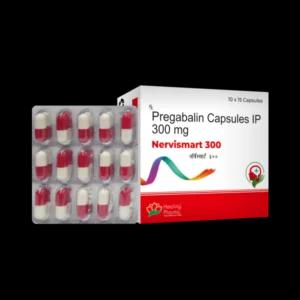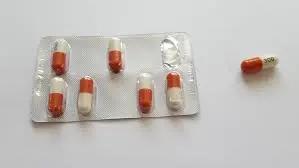Pain Inflammation
Get valuable insights into Pain Inflammation, including its causes, symptoms, prevention strategies, and treatment options, while also learning about how you can lower the cost of the medications used to treat Pain Inflammation.
MEDICAL INFORMATION
Pain Inflammation Key Facts
Related Medications
Pain and inflammation are integral aspects of the body’s defence and healing mechanisms. While both are essential responses, they can also contribute to significant discomfort and impair daily functioning when they become chronic or uncontrolled. Here, we provide you with an in-depth understanding of pain and inflammation, exploring their underlying mechanisms, causes, associated conditions, and available management strategies.
What is the definition of pain & inflammation?
Pain can be defined as an unpleasant sensory and emotional experience associated with actual or potential tissue damage. It is a subjective sensation that can vary in intensity, location, and duration. Pain serves as a protective mechanism by alerting the body to potential harm or injury, prompting individuals to take necessary actions to avoid further damage. It is a complex phenomenon involving the transmission and processing of signals in the nervous system. Pain can be acute, lasting for a short duration, or chronic, persisting for extended periods, often beyond the expected healing time.
Inflammation is a natural and protective response of the body to injury, infection, or tissue damage. It is part of the body’s immune response and is aimed at removing harmful stimuli, initiating the healing process, and restoring tissue homeostasis. Inflammation involves complex interactions between immune cells, chemical mediators, and blood vessels. The characteristic signs of inflammation include redness, swelling, heat, pain, and loss of function in the affected area. While acute inflammation is typically a short-term and self-limiting process, chronic inflammation can occur when the inflammatory response persists, leading to tissue damage and contributing to the development of various diseases.
The interplay between pain and inflammation is intricate. In many cases, inflammation can lead to pain as a result of the release of inflammatory mediators and the activation of pain receptors. Conversely, pain can also trigger or exacerbate the inflammatory response.
What are the causes and triggers of pain & inflammation?
The causes and triggers of pain and inflammation can be diverse and vary depending on the specific condition or underlying factors. Here are some common causes and triggers associated with pain and inflammation:
Physical Injury
- Trauma: Accidents, falls, sports injuries, or fractures can cause tissue damage, leading to localized pain and inflammation
- Overuse or Repetitive Strain: Activities that involve repetitive motions or excessive strain on muscles, tendons, or joints can result in pain and inflammation, such as tendonitis or bursitis
Infection
Bacterial, Viral, or Fungal Infections: Pathogens can invade tissues, leading to an immune response characterized by inflammation and localized pain. Examples include cellulitis, urinary tract infections, or pneumonia.
Autoimmune Disorders
- Rheumatoid Arthritis: An inflammatory disease where the immune system attacks the joints, leading to chronic inflammation, pain, and swelling
- Systemic Lupus Erythematosus (SLE): An autoimmune disease that can affect multiple organs and tissues, leading to inflammation, pain, and other symptoms
- Psoriatic Arthritis: Inflammatory arthritis associated with psoriasis, causing joint pain, swelling, and skin manifestations
Chronic Conditions
- Fibromyalgia: A disorder characterized by widespread musculoskeletal pain, tenderness, and fatigue, often accompanied by sleep disturbances and mood issues
- Osteoarthritis: A degenerative joint disease resulting from wear and tear, leading to pain, stiffness, and inflammation in the affected joints
- Inflammatory Bowel Disease (IBD): Conditions like Crohn’s disease and ulcerative colitis can cause chronic inflammation and abdominal pain
Nerve Damage
Neuropathic Pain: Nerve damage or dysfunction can result in chronic pain conditions like neuropathy, trigeminal neuralgia, or post-herpetic neuralgia.
Environmental Triggers
- Allergens: Exposure to allergens such as pollen, pet dander, or certain foods can trigger an allergic reaction, causing inflammation and associated symptoms like pain or itching
- Irritants: Chemical irritants, pollutants, or toxins can cause localized inflammation and pain, such as contact dermatitis or lung irritation
Underlying Medical Conditions
Certain diseases or medical conditions can cause pain and inflammation as symptoms. Examples include gout, pancreatitis, endometriosis, or certain cancers.
Other Factors
- Lifestyle Factors: Poor posture, sedentary lifestyle, obesity, smoking, or inadequate sleep can contribute to pain and inflammation
- Psychological Factors: Stress, anxiety, and depression can influence pain perception and contribute to the development or exacerbation of pain and inflammation
It’s important to note that the causes and triggers of pain and inflammation can be multifactorial and complex. Identifying the underlying cause is crucial in determining appropriate treatment approaches and managing symptoms effectively. Healthcare professionals, such as physicians, rheumatologists, or pain specialists, can perform comprehensive evaluations to determine the specific causes and triggers in individual cases.
What are the symptoms of pain & inflammation?
Pain and inflammation are both responses to injury or disease, and they each have distinct symptoms.
Pain Symptoms
Pain can manifest in a variety of ways depending on its cause, location, and duration. It can be:
- Acute (sudden and severe) or chronic (long-term)
- Sharp, dull, throbbing, burning, or aching
- Constant or intermittent
- Localized (confined to one area) or widespread
- Accompanied by other symptoms, such as fatigue, mood changes, or difficulty sleeping
Pain is also highly subjective and personal. Two people with the same condition may describe their pain in different ways, or find that it affects them differently.
Inflammation Symptoms
Inflammation is the body’s protective response to injury or infection, and it typically involves the following symptoms:
- Redness: This is due to the expansion of the small blood vessels in the area of inflammation, which allows more blood to flow to the area
- Heat: Increased blood flow can also make the inflamed area feel warm to the touch
- Swelling: Fluid and immune cells can accumulate in the area, causing it to swell
- Pain: Chemicals released by the immune cells can stimulate nerve endings, causing pain. The swelling can also press against nerves or surrounding tissues, causing pain
- Loss of function: Depending on the location and severity of the inflammation, it may limit the normal function of the affected body part
These are the typical signs of inflammation, but not all may be present in every case. In some chronic conditions, such as autoimmune diseases, inflammation may occur without the usual signs.
If you have symptoms of pain and inflammation that are severe, persistent, or causing you concern, you should seek medical attention. Your healthcare provider can help identify the cause of your symptoms and recommend appropriate treatment.
How is pain & inflammation diagnosed?
Diagnosing pain and inflammation involves a multi-step process that typically includes a medical history, physical examination, and possibly diagnostic tests. Here’s an overview of how healthcare providers generally approach it:
Medical History
The healthcare provider will first ask about the history of your symptoms. This can include questions about the location of the pain, how it feels (sharp, dull, throbbing, constant, intermittent, etc.), its intensity, when it started, any activities or factors that make it worse or better, and any associated symptoms. A complete medical history, including a list of current medications, underlying diseases, or conditions, is also important.
Physical Examination
A physical exam can help the healthcare provider better understand the nature and possible causes of the pain. This can involve checking for swelling, redness, and warmth (signs of inflammation), tenderness, and restricted movement. The healthcare provider might palpate or touch the area, ask you to move in certain ways, or conduct other tests to help narrow down the cause of the pain and inflammation.
Diagnostic Tests
Depending on the findings from the medical history and physical examination, the healthcare provider may order further tests. These could include:
- Blood tests: These can help identify signs of inflammation in the body, such as elevated levels of C-reactive protein (CRP) or an increased white blood cell count. Other tests, such as rheumatoid factor or anti-CCP, can help diagnose autoimmune diseases like rheumatoid arthritis
- Imaging tests: X-rays, CT scans, or MRI scans can help visualize the affected area and identify any abnormalities that might be causing the pain and inflammation. For example, these tests can reveal fractures, tumors, tissue damage, or signs of diseases like osteoarthritis
- Other tests: In some cases, other procedures like a joint fluid analysis or nerve conduction studies may be needed to diagnose certain conditions
The process of diagnosing the cause of pain and inflammation can sometimes be straightforward, but in other cases, it can be complex and require a series of tests and evaluations. Once the cause is identified, the healthcare provider can then recommend appropriate treatment options.
What medications are used to treat pain & inflammation?
Nonsteroidal Anti-Inflammatory Drugs (NSAIDs)
- Examples include over-the-counter ibuprofen, naproxen, and aspirin
- NSAIDs reduce pain, inflammation, and fever by inhibiting the production of prostaglandins, which are involved in the inflammatory response
- They are commonly used for conditions like osteoarthritis, rheumatoid arthritis, and musculoskeletal injuries
- Different NSAIDs have varying dosing schedules, side effects, and considerations for individuals with specific health conditions
Acetaminophen (Paracetamol)
- Acetaminophen is effective in pain relief and reducing fever, but it has minimal anti-inflammatory effects
- It is commonly used for mild to moderate pain, such as headaches, dental pain, or postoperative pain
- Caution should be exercised to avoid exceeding the recommended dosage to prevent liver damage
Opioids
- Opioids, such as codeine, oxycodone, and morphine, are potent analgesics used for moderate to severe pain
- They work by binding to opioid receptors in the central nervous system, reducing pain perception
- Opioids are typically reserved for short-term use or in cases where other treatments have been ineffective
- Due to the potential for dependence, tolerance, and misuse, opioids should be used cautiously and under close supervision
Corticosteroids
- Corticosteroids, such as prednisone or dexamethasone, have potent anti-inflammatory properties
- They are used to reduce inflammation in conditions like rheumatoid arthritis, asthma, and inflammatory bowel disease
- Corticosteroids can be administered orally, topically, or through injections, depending on the specific condition and severity
Disease-Modifying Antirheumatic Drugs (DMARDs)
- DMARDs, such as methotrexate, sulfasalazine, and hydroxychloroquine, are used to treat inflammatory conditions like rheumatoid arthritis and psoriatic arthritis
- DMARDs work by suppressing the underlying immune response that contributes to inflammation and joint damage
- They are typically used for long-term management of chronic inflammatory conditions
Biologic Response Modifiers
- Biologic medications, including tumor necrosis factor (TNF) inhibitors, interleukin (IL) inhibitors, and Janus kinase (JAK) inhibitors, target specific molecules or pathways involved in the inflammatory process
- They are used in conditions like rheumatoid arthritis, psoriatic arthritis, ankylosing spondylitis, and inflammatory bowel disease
- Biologics are usually administered via injection or infusion and require close monitoring due to potential side effects and increased risk of infections
Other Medications
Depending on the specific condition and symptoms, other medications may be prescribed to manage pain and inflammation, such as anticonvulsants, antidepressants, muscle relaxants, or topical analgesics.
It’s important to note that medication choices should be based on individual factors, including the specific condition, severity of symptoms, and potential interactions or contraindications.
What support organizations are available for people living with pain in the UK?
There are several organizations in the UK that offer support, resources, and information for individuals living with chronic pain. Here are a few:
- Pain UK: An alliance of charities providing a voice for people in pain. It aims to improve the lives of people living with pain by advocating for effective services and treatments
- Pain Concern: Offers information and support to people with pain and those who care for them. They also run a helpline and produce pain-related podcasts
- The British Pain Society: As the oldest and largest multidisciplinary professional organisation in the field of pain within the UK, this society endeavours to promote education, training, research and development in all fields of pain
- Action on Pain: Provides support and advice for people affected by chronic pain. They offer a pain management programme and have an online shop with aids to assist daily living
- Chronic Pain Ireland: This organization offers support and information to people living with chronic pain. They provide workshops, a phone support line, and a range of other resources
What support organizations are available for people living with pain in the US?
In the United States, several organizations offer support and resources for people living with chronic pain. Here are a few:
- American Chronic Pain Association (ACPA): ACPA offers peer support and education in pain management skills to people with pain, their families, and their friends, and to healthcare professionals
- U.S. Pain Foundation: This is a nonprofit organization dedicated to serving those who live with pain conditions and their care providers. They offer numerous programs and services designed to help people find resources and support to better manage their pain and improve their quality of life
- American Pain Society (APS): Although APS mainly serves pain professionals, it also provides resources and news updates for patients and the general public
- National Fibromyalgia Association: This organization offers resources for individuals living with fibromyalgia and other chronic pain conditions, with a focus on education, research, advocacy, and support
- Pain News Network: An online non-profit news source for information and commentary about chronic pain and pain management
- Chronic Pain Anonymous (CPA): This is a fellowship of men and women who share their experience, strength, and hope with each other, that they may solve their common problem and help others recover from chronic pain
Medical Disclaimer
NowPatient has taken all reasonable steps to ensure that all material is factually accurate, complete, and current. However, the knowledge and experience of a qualified healthcare professional should always be sought after instead of using the information on this page. Before taking any drug, you should always speak to your doctor or another qualified healthcare provider.
The information provided here about medications is subject to change and is not meant to include all uses, precautions, warnings, directions, drug interactions, allergic reactions, or negative effects. The absence of warnings or other information for a particular medication does not imply that the medication or medication combination is appropriate for all patients or for all possible purposes.





